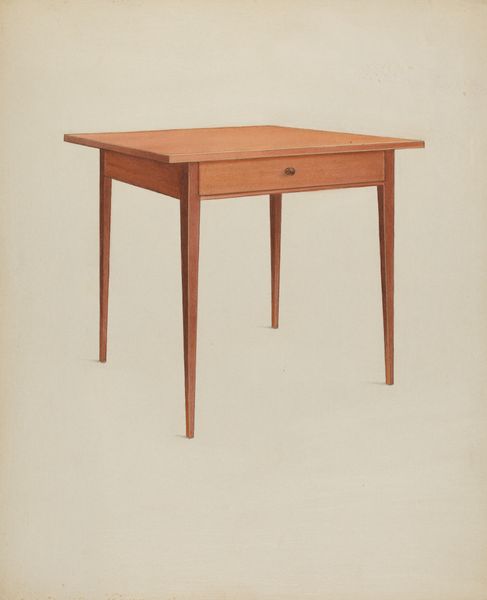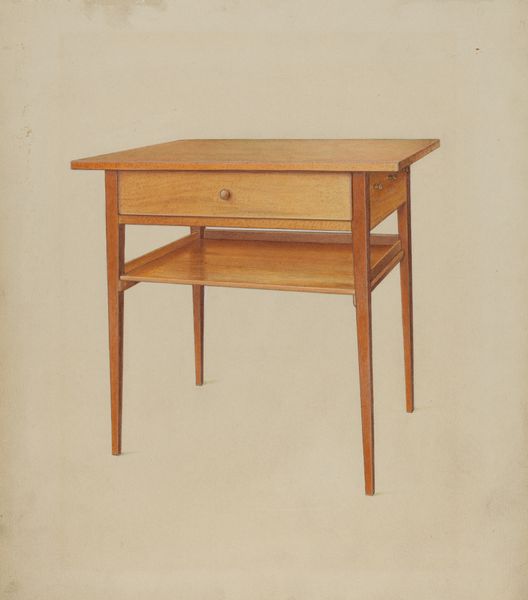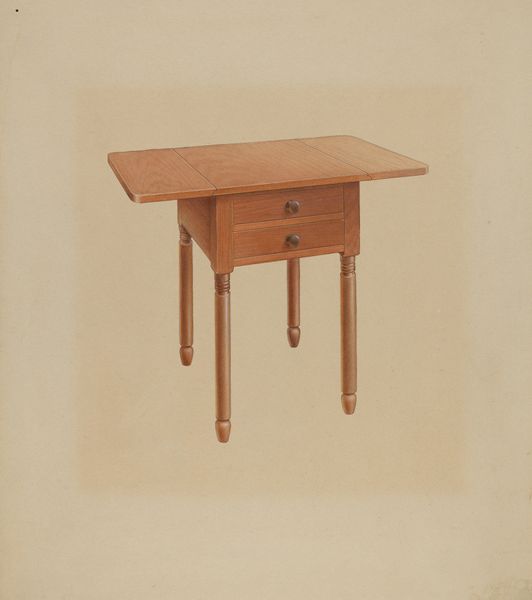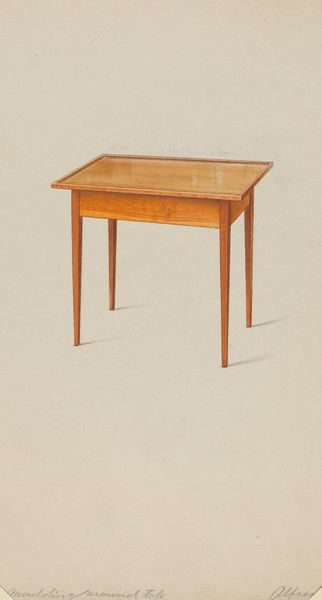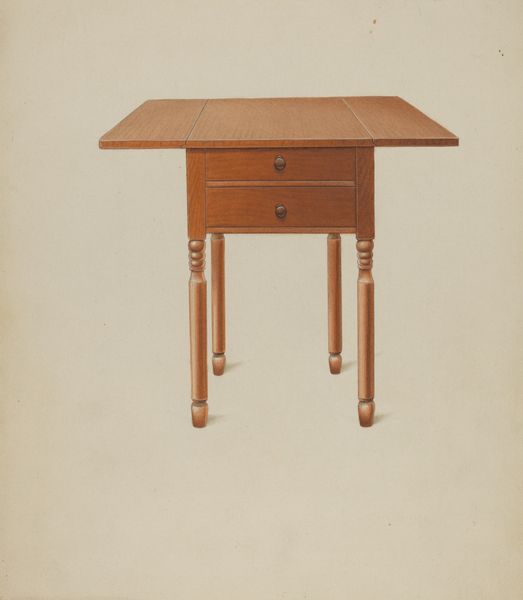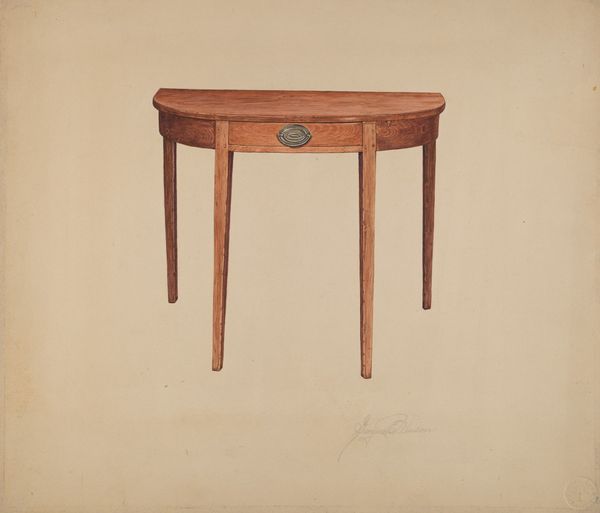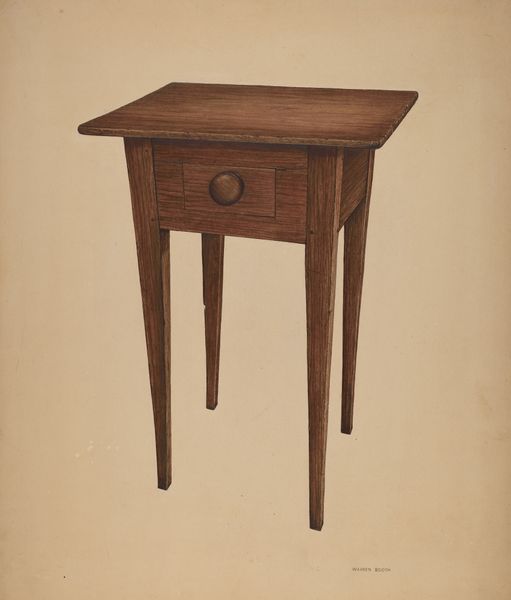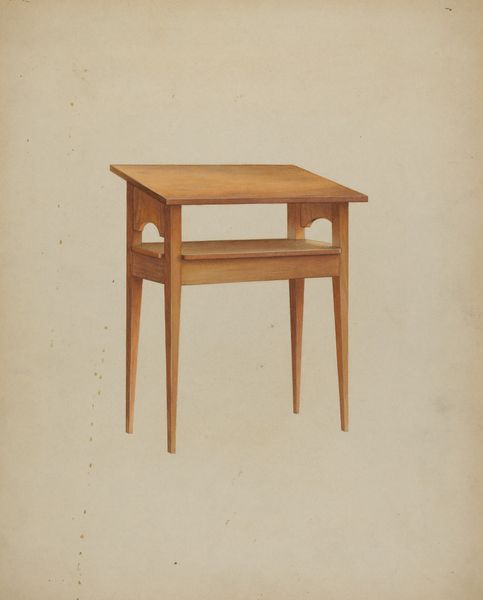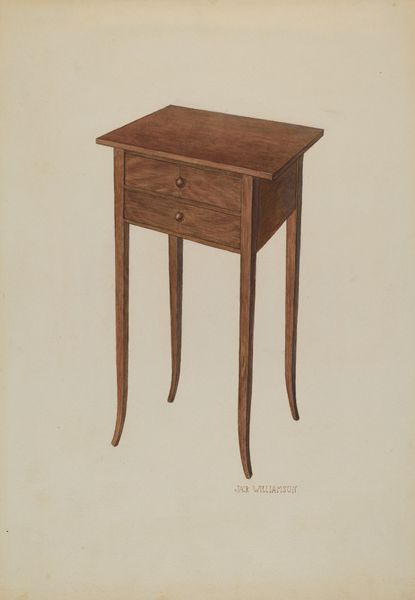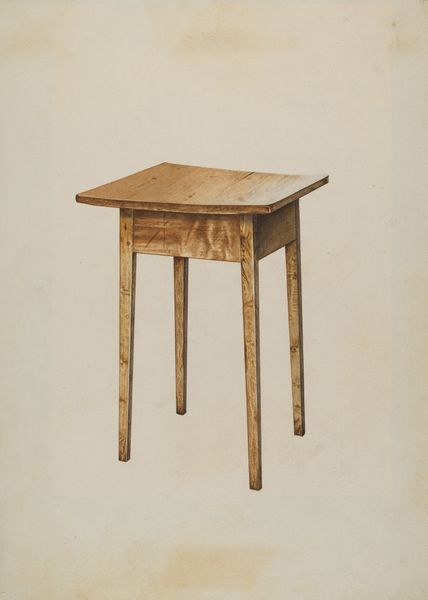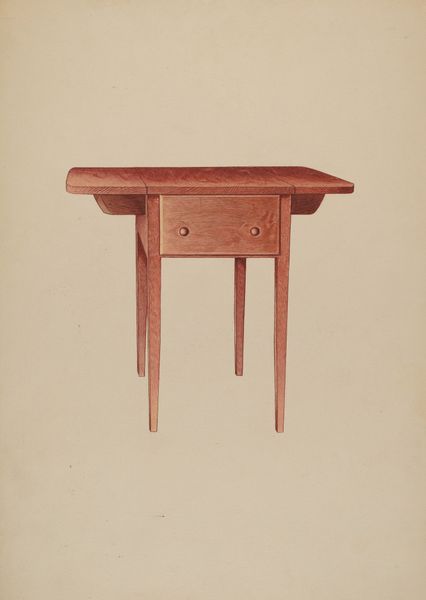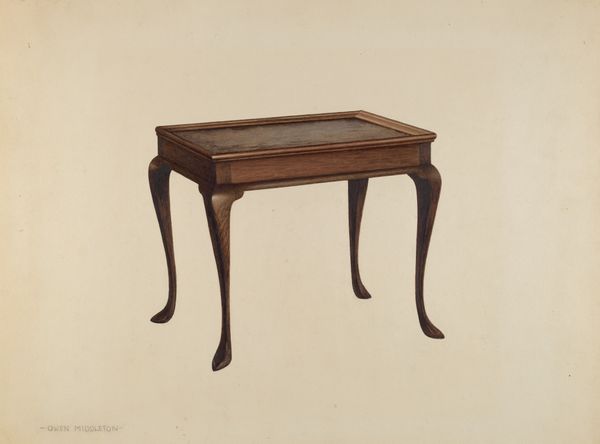
drawing, pencil
#
drawing
#
charcoal drawing
#
pencil
#
realism
Dimensions: overall: 28 x 22.7 cm (11 x 8 15/16 in.) Original IAD Object: 26 1/4" high; 31" wide; 17 1/2" deep
Copyright: National Gallery of Art: CC0 1.0
Curator: Oh, hello there. This work is entitled "Table," and it’s thought to have been created around 1938 by John W. Kelleher. He used pencil and charcoal, as far as we can tell, on this drawing. What's your initial reaction to this understated beauty? Editor: Well, understated is right! My first impression is quiet… almost forlorn. It’s such a simple subject rendered with such care, it feels like a ghost of a memory. Like, what conversations has this table borne witness to, do you think? What meals has it held? It has such long slender legs… I imagine it’s waiting patiently in some grand hall. Curator: You’ve really hit on something there! These drawings, from what I understand, often served a very practical purpose at the time—documenting furniture designs for potential construction, possibly even for the WPA’s Federal Art Project. So that clean style, it’s partially a blueprint for functional things. Editor: Blueprints. Yes! That context completely shifts how I see it! Suddenly, the objectness, the functionality, makes me think about who this table was meant to serve. Whose hands were meant to touch it? And, even more crucial, who had the privilege to have such carefully crafted furniture in their homes? Is this aspirational? Curator: That's the magic, isn't it? It's realism, of course, in style… you see every little detail of woodgrain, of how light might reflect, or how light barely touches other surfaces, but it feels like there’s room to breathe between function and imagination, that utilitarian edge with a deep sense of melancholy… or maybe the feeling that everything can always be slightly better. It captures some real sense of trying to capture stability through craftsmanship and material objects when the whole world was going topsy-turvy with crisis. Editor: Exactly! It speaks to this moment of wanting to have some control! And as you were saying, there's this idea of 'betterment’-- but who is benefiting from that ‘betterment’? Are we considering questions of equity and access when it comes to functional beauty in art and design from this period? Curator: Absolutely, and thinking about who got to have nice things versus who made the nice things brings so many questions to bear. In fact, looking at it now I’m having completely different feelings about what sort of project would have justified such close work! Editor: It really is quite profound the more you look. Simple object; but so much lurking. Thanks for opening it up.
Comments
No comments
Be the first to comment and join the conversation on the ultimate creative platform.
